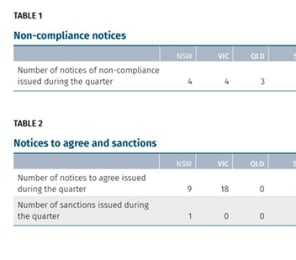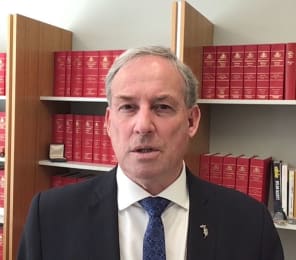We talked to Grant Thornton’s Principal & National Head of Health & Aged Care, Darrell Price about the reports including who he sees leading this transformation – and how soon rationalisation of the sector could begin.
He acknowledges that these are complex questions.
Darrell underlines that the transformation model is not a solution in itself, but is designed to start the conversation about the sector’s future.
“It does highlight key aspects of the sector’s future design, the aspirations we have for those in care and, how service providers can develop sustainable business models to meet community, regulatory, government and peer expectations,” he said.
While he says future transformation of the sector will be framed by the Royal Commission and the Government’s response, it will depend on the industry having a strong voice by a dedicated group of “thought leaders”, including consumers, providers, regulators, the Government and independent experts.
“This group needs to oversee the transformation and also have sufficient gravitas within their sphere of influence, to remove barriers to change, and promote opportunities for improvement,” he stated.
“Additionally, a small group of executives will be required to guide the execution on a day to day basis, and report on progress to transformation governance.”
And though the model that Grant Thornton has put forward is only one for discussion, Darrell says it is hoped the Government will respond on timing for any transformation plan before the Royal Commission hands in its Final Report in November this year – five months away.
“With interim governance and structures in place, less time will be required to move to implementation and execution of the Government’s chosen course of action,” he said. “This will give consumers and providers greater certainty that transformational change will be undertaken.”
One instrument proposed to pay for this transformation is an aged care levy – which Darrell concedes make not be feasible in the current pandemic environment, labeling it a “blunt instrument” for raising funding.
“An aged care levy runs the risk of tying the additional funds raised with reports by the Royal Commission and thus may not meet community expectations,” he acknowledged. “On the other hand, it is a simple and elegant funding solution – for a while.”
He says Grant Thornton believes such a levy could be applied for a fixed period of time, with the longer-term financing of aged care to be underpinned by a ‘basket’ of measures that stimulate different parts of the sector.
“In the end we, as a society, have to decide how much we are prepared to pay to support elderly Australians. The answer to that question will determine the extent to which each measure is applied and for what period. The modelling will be complex and still needs to be done.”
Darrell points out that a 1% increase in GST rate will raise approximately $6.9 billion.
“In a post COVID world where there are competing priorities for any additional revenues raised by Governments, the sector will need to be savvy and have a substantial business case to get their share,” he stated.
The message is clear: the sector will need a strong, united voice to persuade the Government to engage with the reports and prioritise the sector’s viability.
Darrell tells us that Government representatives were invited to take part in the March workshops but didn’t attend because of timing.
The reports have been provided to the Minster, senior Departmental and agency leaders however.
In a post-COVID world, will the findings attract their support without a single voice to make them heard?










